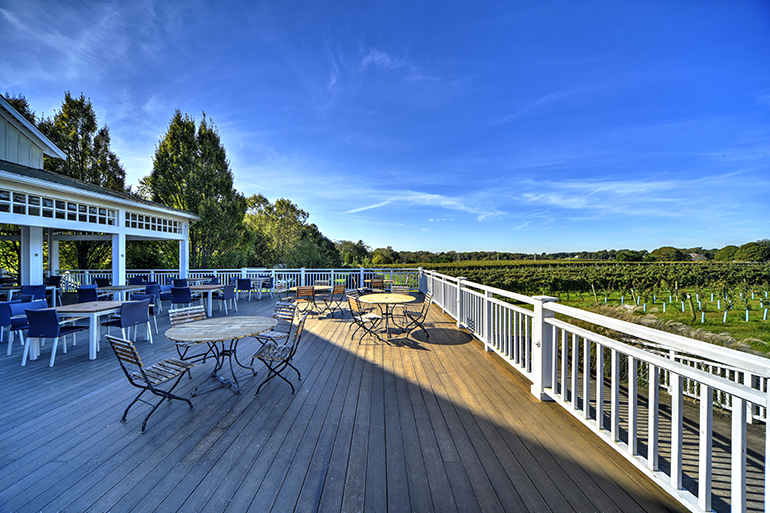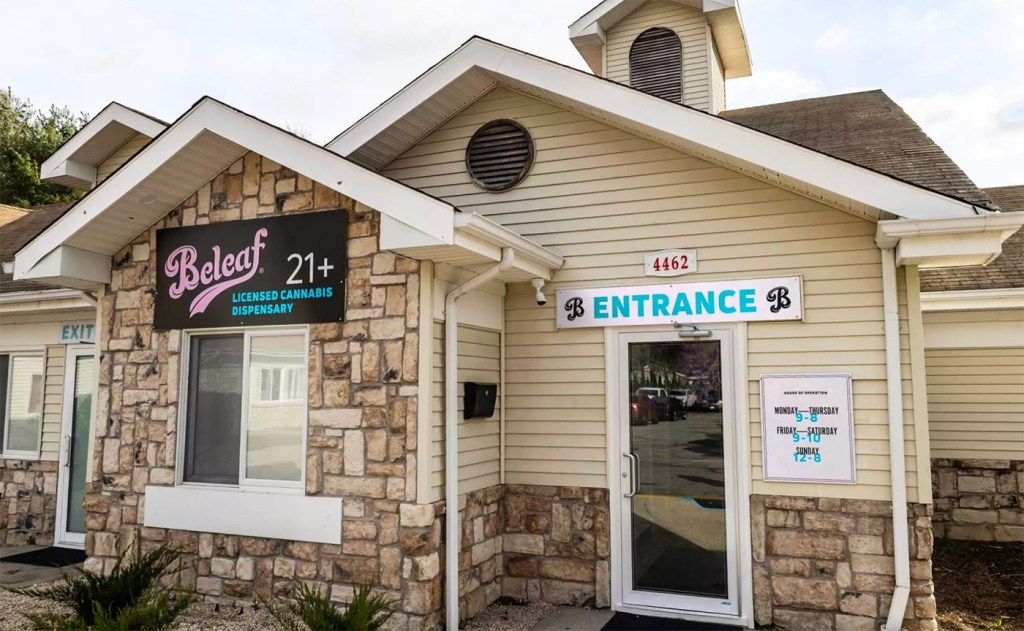Cutchogue's Bedell Cellars: Past, Present and Future

Had the word “bucolic,” and all it conjures, not been around since the early 16th century, it would surely have been coined by somebody walking the grounds of Bedell Cellars, idling a moment beneath a 100-year-old maple or gazing out through the endless grapevines.
Looking out over the rows on rows of green from a distance and then strolling among them, a mazelike walk without beginning or end, a sensation arises, a feeling as if M.C. Escher and Lao Tzu got together and decided to create a joint venture over a glass or two of merlot. It’s something not quite in your control, something distinctive, like you’ve never seen before.
Every vineyard, like every bottle of wine, tells its own story. Bedell’s began when Kip and Susan Bedell planted their first grapevines in 1980 and grew their product and reputation to a level where Wine Spectator was calling Kip “Mr. Merlot.” Michael Lynne, the then-president of New Line Cinema who produced and distributed such films as The Lord of the Rings trilogy, purchased Bedell Cellars in 2000 for $5 million—a record price for a Long Island winery at the time. Over the next two decades, he and his team evolved it into one of the finest producers not only in New York but on the East Coast, always with the vision of creating world-class wines.
The next chapter has yet to be written. Lynne had recently been quietly looking to sell the property, and after his death this past March, amid an outpouring of emotion from the wine community local and afar, the family said it was time to formally put on the market.
“This is such a unique situation,” says listing agent Gary DePersia of Corcoran. “Bedell has such a great name and so many people know about it who are wine aficionados, who are familiar with the North Fork.”

The $17.9 million listing including Bedell’s main Cutchogue property of 50 acres plus the 10,000-square-foot tasting room and production facility, along with Corey Creek’s 22-acre vineyard and tasting room, in Southold. The Bedell property is also home to a working apple orchard and an 1,800-square-foot cottage, which is more than 300 years old and is listed on the National Register of Historic Places.
“There are three separate locations with five separate pieces of property, including a house on what I call their main campus—redone by Vincent Wolf, landscaping by Edmund Hollander—and they also have residential wooded property behind the vineyard in that location,” DePersia adds. “It offers a lot of opportunities. This is truly a vertical operation, from growing the grapes to harvesting the grapes to processing them to the whole wine operations—other than making the bottles—and that’s not always the case with vineyards.”
The land, the structures, the vines, the wines—it is a confluence of opportunity never quite seen before in East End real estate. What value two of the most well-regarded brands in Long Island wine will ultimately bring to the deal is intriguing to potential investors and outside observers alike. Among its accolades, Bedell has been named by Wine Enthusiast as one of the nation’s Top 25 Tasting Rooms, and it produced the first New York red wine to receive a 91 rating from Wine Spectator. In 2013, it earned the honor of being the first Long Island wine served at the White House, when their 2009 Merlot was poured at Barack Obama’s inauguration. That is an impressive lineage and legacy, one that has no doubt factored into the interest in the property from parties in New York and as far afield as California and France.

Vineyard sales have not been an everyday occurrence on Long Island over the past four and a half decades, but three notable deals have taken place in the past two years. In spring of 2017, Mattituck’s Shinn Estate Vineyard sold to financier Randy Frankel and his wife, Barbara. A year later, family-run Mexican wine company Rivero-González purchased Big E Farm and Martha Clara Vineyards in Riverhead from the Entenmann family—the $15 million was a record for a winery, and the second largest deal ever on the North Fork, behind only a $19.5 million waterfront property in 2008. And last summer, Palmer Vineyard was sold to the Massoud family, owners of neighboring Paumanok Vineyards.
As Long Island Wine Country continues to undergo an evolution that brings increased focus not only to the wines but also to the food and the land and how it all intertwines, casual visitors and oenophiles alike will continue seeking an experience. This will surely include the tours, tastings and other trappings that have helped grow the region as a destination, but also new initiatives from a new generation of owners.
“Wine is cultural, and when you’re a brand-new region, you’re trying to find your identity,” says Jamesport Vineyards’ Ron Goerler, the second-generation owner of the land and the business at one of the North Fork’s most renowned wine producers. Yes, the local wine region remains in relative infancy—its 40 or so years taken in comparison with the centuries of European counterparts—and “the future of this all falls upon that next generation,” Goerler continues. “It’s a hard thing to do. When you’re planting vines today, you’re planting for the future, and you don’t always know, 30 years from now, what you’re going to get.”
When Louisa and Alex Hargrave put Long Island’s first vines into its earth and founded Hargrave Vineyard back in 1973, nobody had a dream where the one-small-step-for-Long-Island-wine moment would lead. Owning a vineyard on the East End now means becoming part of history, but also a tomorrow that must be carefully crafted.
“You attempt to create something that’s special, distinctive,” Michael Lynne told Wine Spectator in 2005, “that in fact never existed before, and yet is not totally within your control.”



